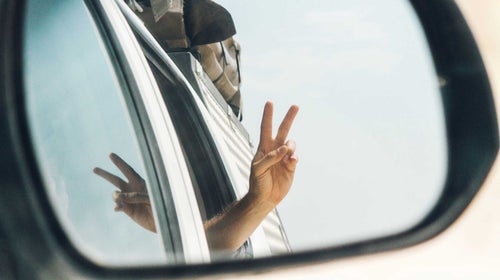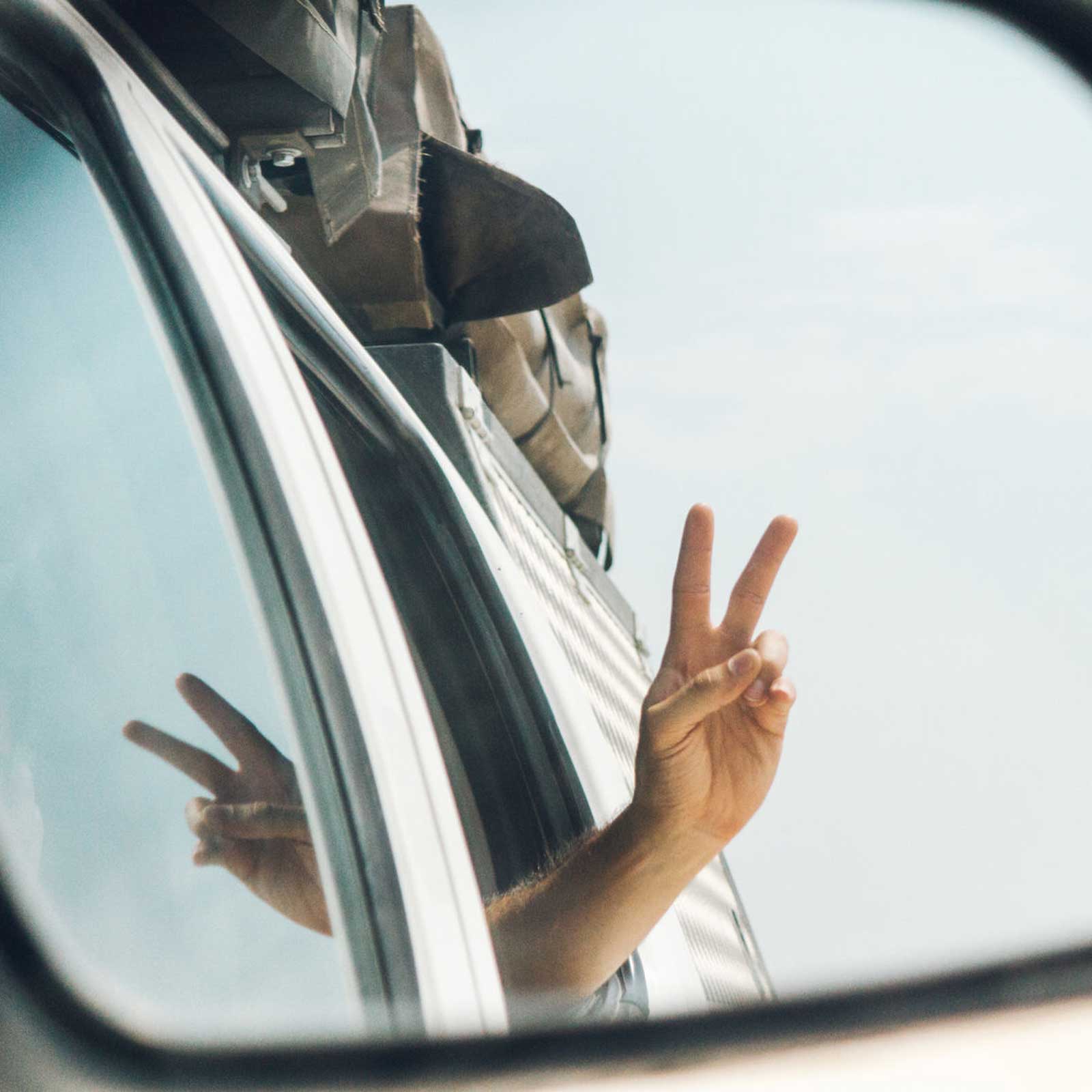When I came up with the idea of ,╠řI created╠řall sorts of elaborate, fabulous escapades involving pack rafts, folding bicycles, climbing harnesses,╠řsea kayaks, mountain bikes, and vans to carry all the gear. These were all brilliant. But the idea only began to spread to a greater number of╠řpeople (with fewer╠řludicrous stashes of outdoor gear in the garage) once I made the idea much simpler. Simple + short╠ř+ local╠ř+ cheap = an achievable microadventure, unlike╠řthe vicarious adventure thrills you read about in magazines but never actually do yourself.
Just as the foundations of a delicious meal╠řare salt, fat, acid, and heat (though I would argue that an alternative route is to get yourself exhausted and cold in the hills and then melt with joy as you shovel anything edible into your mouth), so too are there staple activities in any good month of microadventures. These include╠řsleeping on a hill;╠řswimming in a river, lake, or ocean;╠řsitting still in a forest;╠řand doing something that scares or challenges you. Other ingredients╠řdepend upon where you live, the time of year, and what motivates you to shake up your life. For instance, maybe you want to get some exercise in a fun, new way╠řor get head space away from your phone. Maybe you want to╠řspend more time with loved ones, discover (or rediscover) new places, save money, or prepare for a bigger adventure.
No matter what, itÔÇÖs important to make the barriers to entry as low as possible. That means choosing activities that are local, easy to organize, short enough to be compatible with real life, and cheap. If youÔÇÖre trying to become more microadventurous, here are a few things to╠řremember.
DonÔÇÖt Overspend on Gear
All you need to get started is your basic outdoor getup:╠řwarm clothes and raingear, a water bottle, a headlamp, your backpack. If youÔÇÖre going to camp out, youÔÇÖll need a sleeping bag, bivy bag, and sleeping mat. If youÔÇÖre up for some wild swimming, youÔÇÖll need your swimsuit. (Or perhaps not.)
Get the Right Mindset on Timing
How can you fit adventure into the realities of a nine-to-five╠řcareer? SimpleÔÇöfit it into the five-to-nine. ThatÔÇÖs the╠ř16 hours of theoretical╠řdaily freedom we all tend to undervalue and fritter. When somebody asks me, ÔÇťWhat is a microadventure?ÔÇŁ╠řI say, ÔÇťLeave work at 5 P.M. Head out of town. Sleep on a hill. Wake up at sunrise. Get back to your desk for 9 A.M.ÔÇŁ╠řSimple, but you will remember it a year from now.
Supershort Outings Can Be╠řSuper Worth It
We often love the idea of living more adventurously╠řand dream that we could somehow do that with our lives. The idea is glorious, but making it happen can be daunting. I am besotted with wild swimming, jumping into rivers, lakes and oceans at every single opportunity. But at this time of year╠řthe water is cold, and the prospect of getting in is nerve-racking. The first step in is a shock. But a few more seconds pass, I╠řplunge, and then I am in! IÔÇÖm doing it! Whooping! Delighted! Often in this season, this is the end of the operationÔÇöI leap out of the water, grinning, and get dressed and warm as quickly as I can.
Breaks Are for Taking
Long before╠řwork e-mail╠řand social media started screaming for our attention 24/7, some wise government officials in Japan coined the phrase╠ř╠ř(forest bathing) to encourage people to become healthier by taking strolls in the forest. I love the idea of bathing in a forest, that feeling of being submerged beneath the green (or glorious fall colors), far from the tribulations of an overflowing inbox. Turn off your phone, go for a walk in the woods, and slowly you will learn to slow down, observe, listen, be calmer. What do I do when my work life becomes insanely busy? Turn off my computer and go for a walk in the woods. I never regret it.
ThereÔÇÖs Always Something New to Try
Make an effort this month to seek out something that scares or challenges you. It could be entering a longer race than you have done before, whether thatÔÇÖs the wonderful ╠řor the Barkley Marathons. It might be taking a chilly dip or your first night of camping out.╠řOne of the key aspects of microadventures is learning to look differently at the familiar, to see wilderness and excitement around your hometown, rather than thinking you can only live adventurously if you fly to Patagonia. A way that I love resetting how I look at somewhere familiar is to go for a walk in the dark. Pick a route you know well, perhaps your morning run╠řor the route you walk your dog╠řor your favorite out-of-town trail, and go walk it╠ř.╠řThe well-known becomes mysterious. A mile becomes a long way. Once youÔÇÖre brave enough, turn off your headlamp. I love letting my eyes adjust to the moonlight╠řand paying attention to different senses. You notice the smells of the fields. I remember once hearing a rabbit run past me into the undergrowth. I have never paid such close attention before.
DonÔÇÖt Be Afraid to Ask an Expert
One of the regular problems of adventure╠řis that newcomers can feel intimidated by the expertise, fitness, and elite nature of it all. Microadventures are the exact opposite.╠řEveryone is welcome. And hereÔÇÖs the thing: once you summon up the nerve to begin, to approach an expert╠řand say that you are new but keen, you will always find that they are only too eager to help get you started.╠řGoogle your local climbing wall, give them a ring, and say, ÔÇťIÔÇÖve never climbed before, IÔÇÖm totally unfit, really scared of heights, canÔÇÖt do a single pull-up.ÔÇŁ Staff╠řwill say, ÔÇťGreat! Come along and try it out! You are very welcome.ÔÇŁ
DonÔÇÖt Be Afraid to╠řBe the Expert
However much of a novice you might feel (see above), the simple fact that you are reading this means that youÔÇÖre╠řmore knowledgeable and motivated than loads╠řof your friends. So take on the challenge of introducing a friend to the outdoors. YouÔÇÖll get a real buzz from being the expert, and your friend will enjoy trying something new. It could be as simple as taking your camping stove to the park and making coffee. At the very least, this is an evening or a day that you will not soon forget. (And how often can we say that about the times we meet a friend for coffee or go to a bar or go out for a meal?)
Support Local Wonders
Have a look on Google for the state parks nearest to where you live. There are more than 10,000 in the U.S.ÔÇöan incredible resource, and a great privilege to enjoy. Make the effort to explore one youÔÇÖve╠řnever been to, and do your bit to support their upkeep. The more people that use, enjoy, and care for the wilderness regions of the U.S., the more the government will value them and take care of them.


